The Effects of Thermal and Atmospheric Pressure Radio Frequency Plasma Annealing in the Crystallization of TiO2 Thin Films
Abstract
:1. Introduction
2. Materials and Methods
2.1. Thin Films Deposition
2.2. Plasma Treatment
2.3. Temperature Measurement during Plasma Annealing
2.4. Heating Treatment
2.5. Thin Films Analysis
3. Results and Discussion
3.1. I-V Curve and OES Test of the Discharge
3.2. Temperature Measured
3.2.1. Thermocouple
3.2.2. OH Peak Simulation
3.2.3. Newton’s Law
3.3. Thin Film Characterization
4. Conclusions
Author Contributions
Funding
Conflicts of Interest
References
- Won, D.J.; Wang, C.H.; Jang, H.K.; Choi, D.J. Effects of thermally induced anatase-to-rutile phase transition in MOCVD-grown TiO2 films on structural and optical properties. Appl. Phys. A 2001, 73, 595–600. [Google Scholar] [CrossRef]
- Zarubica, A.; Vasić, M.; Antonijevic, M.D.; Ranpelović, M.; Momčilović, M.; Krstić, J.; Nedeljković, J. Design and photocatalytic ability of ordered mesoporous TiO2 thin films. Mater. Res. Bull. 2014, 57, 146–151. [Google Scholar] [CrossRef]
- Ullattila, S.G.; Periyat, P. A ‘one pot’ gel combustion strategy towards Ti3+ self-doped ‘black’ anatase TiO2−x solar photocatalyst. J. Mater. Chem. A 2016, 4, 5854–5858. [Google Scholar] [CrossRef]
- Yin, Z.F.; Wu, L.; Yang, H.G.; Su, Y.H. Recent progress in biomedical applications of titanium dioxide. Phys. Chem. Chem. Phys. 2013, 15, 4844–4858. [Google Scholar] [CrossRef]
- Gan, W.Y.; Lam, S.W.; Chiang, K.; Amal, R.; Zhao, H.; Brungs, M.P. Novel TiO2 thin film with non-UV activated superwetting and antifogging behaviours. J. Mater. Chem. 2007, 17, 952–954. [Google Scholar] [CrossRef]
- Lee, S.Y.; Park, S.J. TiO2 photocatalyst for water treatment applications. J. Ind. Eng. Chem. 2013, 19, 1761–1769. [Google Scholar] [CrossRef]
- Byrne, J.A.; Eggins, B.R.; Brown, N.M.D.; McKinney, B.; Rouse, M. Immobilisation of TiO2 powder for the treatment of polluted water. Appl. Catal. B Environ. 1998, 17, 25–36. [Google Scholar] [CrossRef]
- Meng, A.; Zhang, J.; Xu, D.; Cheng, B.; Yu, J. Enhanced photocatalytic H2-production activity of anatase TiO2 nanosheet by selectively depositing dual-cocatalysts on {101} and {001} facets. Appl. Catal. B Environ. 2016, 198, 286–294. [Google Scholar] [CrossRef]
- Wang, Z.; Yang, C.; Lin, T.; Yin, H.; Chen, P.; Wan, D.; Xu, F.; Huang, H.; Lin, J.; Xie, X.; et al. Visible-light photocatalytic, solar thermal and photoelectrochemical properties of aluminium-reduced black titania. Energy Environ. Sci. 2013, 6, 3007–3014. [Google Scholar] [CrossRef]
- Lee, K.E.; Gomez, M.A.; Elouatik, S.; Demopoulos, G.P. Further Understanding of the Adsorption Mechanism of N719 Sensitizer on Anatase TiO2 Films for DSSC Applications Using Vibrational Spectroscopy and Confocal Raman Imaging. Langmuir 2010, 26, 9575–9583. [Google Scholar]
- Liu, M.; Johnston, M.B.; Snaith, H.J. Efficient planar heterojunction perovskite solar cells by vapour deposition. Nature 2013, 5, 395–398. [Google Scholar] [CrossRef] [PubMed]
- Hodgkinson, J.L.; Sheel, D.W. Advances in atmospheric pressure PECVD: The influence of plasma parameters on film morphology. Surf. Coat. Technol. 2013, 230, 73–76. [Google Scholar] [CrossRef]
- Zhang, J.; Zhou, P.; Liu, J.; Yu, J. New understanding of the difference of photocatalytic activity among anatase, rutile and brookite TiO2. Phys. Chem. Chem. Phys. 2014, 16, 20382–20386. [Google Scholar] [CrossRef]
- Ohsaki, H.; Shibayama, Y.; Yoshida, N.; Watanabe, T.; Kanemaru, S. Room-temperature crystallization of amorphous films by RF plasma treatment. Thin Solid Films 2009, 517, 3092–3095. [Google Scholar] [CrossRef]
- Ohsaki, H.; Suzuki, M.; Shibayama, Y.; Kinbara, A.; Watanabe, T. Room temperature crystallization of indium tin oxide films on glass and polyethylene terephthalate substrates using rf plasma. J. Vac. Sci. Technol. A 2007, 25, 1052–1055. [Google Scholar] [CrossRef]
- Ohsaki, H.; Shibayama, Y.; Nakajim, A.; Kinbara, A.; Watanabe, T. Plasma treatment for crystallization of amorphous thin films. Thin Solid Films 2006, 502, 63–66. [Google Scholar] [CrossRef]
- Massines, F.; Sarra-Bournet, C.; Fanelli, F.; Naudé, N.; Gherardi, N. Atmospheric pressure low temperature direct plasma technology: Status and challenges for thin film deposition. Plasma Process. Polym. 2012, 9, 1041–1073. [Google Scholar] [CrossRef]
- Anand, V.; Nair, A.R.; Shivashankar, S.A.; Rao, G.M. Atmospheric pressure plasma chemical vapor deposition reactor for 100 mm wafers, optimized for minimum contamination at low gas flow rates. Appl. Phys. Lett. 2015, 107, 094103. [Google Scholar] [CrossRef]
- Xu, Y.; Zhang, Y.; Li, L.; Ding, K.; Guo, Y.; Shi, S.; Huang, X.; Zhang, J. Synergistic effect of plasma discharge and substrate temperature in improving the crystallization of TiO2 film by atmospheric pressure plasma enhanced chemical vapor deposition. Plasma Chem. Plasma Process. 2019, 1–11. [Google Scholar] [CrossRef]
- Zhu, W.C.; Li, Q.; Zhu, X.M.; Pu, Y.K. Characteristics of atmospheric pressure plasma jets emerging into ambient air and helium. J. Phys. D Appl. Phys. 2009, 42, 202002. [Google Scholar] [CrossRef]
- Sharma, M.K.; Saikia, B.K.; Phukan, A.; Ganguli, B. Plasma nitriding of austenitic stainless steel in N2 and N2–H2 dc pulsed discharge. Surf. Coat. Technol. 2006, 201, 2407–2413. [Google Scholar] [CrossRef]
- Saloum, S.; Naddaf, M.; Alkhaled, B. Active species characterization in RF remote oxygen plasma using actinometry OES and electrical probes. Vacuum 2010, 85, 439–442. [Google Scholar] [CrossRef]
- Moon, S.Y.; Choe, W. A comparative study of rotational temperatures using diatomic OH, O2 and N2+ molecular spectra emitted from atmospheric plasmas. Spectrochim. Acta Part B 2003, 58, 249–257. [Google Scholar] [CrossRef]
- Vollmer, M. Newton’s law of cooling revisited. Eur. J. Phys. 2009, 30, 1063–1084. [Google Scholar] [CrossRef]
- Choi, H.C.; Jung, Y.M.; Kim, S.B. Size effects in the Raman spectra of TiO2 nano-particles. Vib. Spectrosc. 2005, 37, 33–38. [Google Scholar] [CrossRef]
- Lieberman, M.A.; Lichtenberg, A.J. Principles of Plasma Discharge and Materials Processing; John Wiley & Sons, Inc.: Hoboken, NJ, USA, 2005. [Google Scholar]
- Han, J.; Wang, X.; Wang, N.; Wei, Z.; Yu, G.; Zhou, Z.; Wang, Q. Effect of plasma treatment on hydrophilic properties of TiO2 thin films. Surf. Coat. Technol. 2006, 200, 4876–4878. [Google Scholar] [CrossRef]
- Kang, Y.; Lee, H.; Kang, Y.; Lee, P.S.; Lee, J. Crystallization of lithium cobalt oxide thin films by radio-frequency plasma irradiation. J. Appl. Phys. 2001, 90, 5940. [Google Scholar] [CrossRef]
- Sarra-Bournet, C.; Charles, C.; Boswell, R. Low temperature growth of nanocrystalline TiO2 films with Ar/O2 low-field helicon plasma. Surf. Coat. Technol. 2011, 205, 3939–3946. [Google Scholar] [CrossRef]
- Ohtani, B.; Ogawa, Y.; Nishimoto, S. Photocatalytic activity of amorphous-anatase mixture of Titanium (IV) Oxide particles suspended in aqueous solutions. J. Phys. Chem. B 1997, 101, 3746–3752. [Google Scholar] [CrossRef]
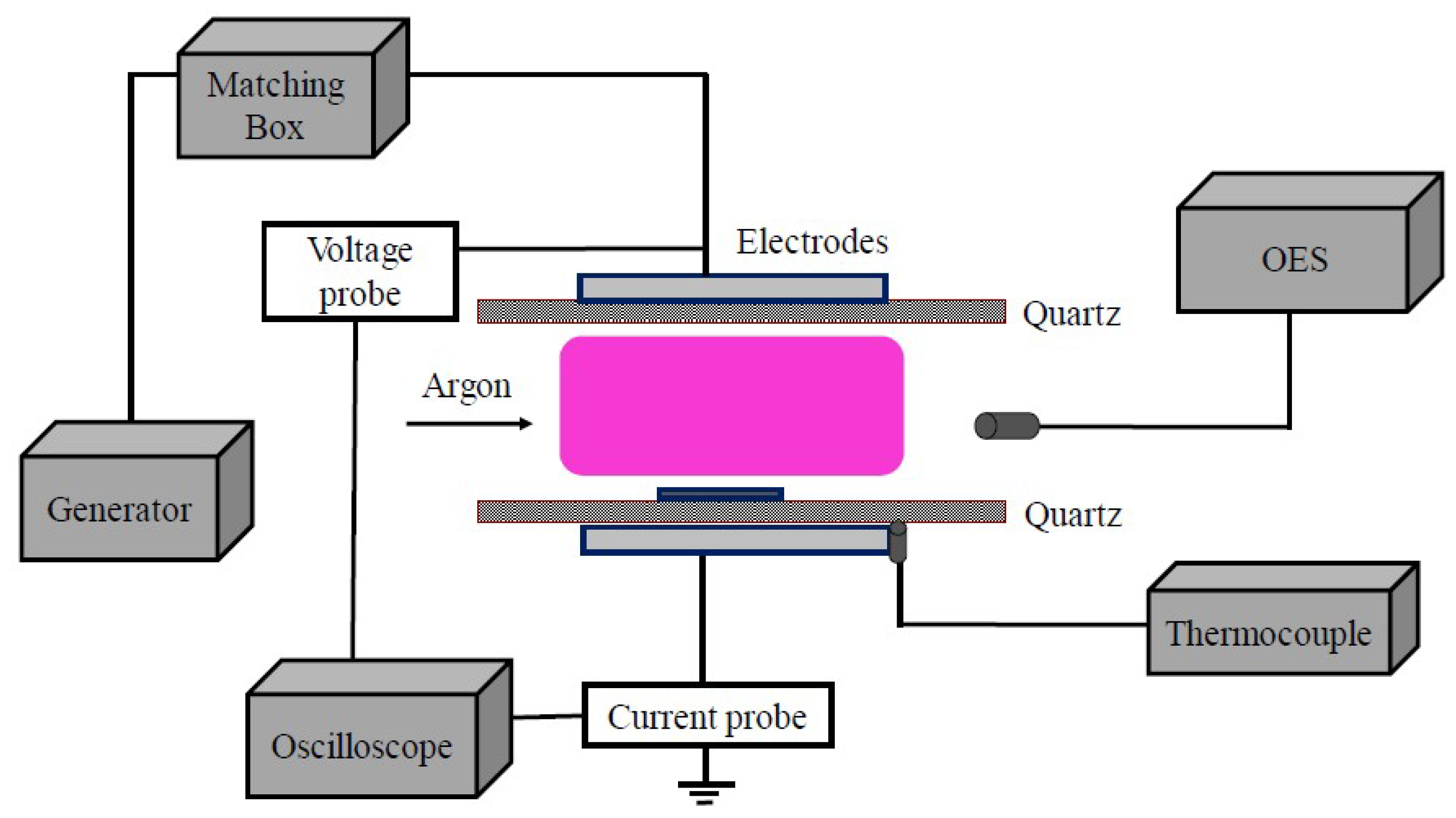
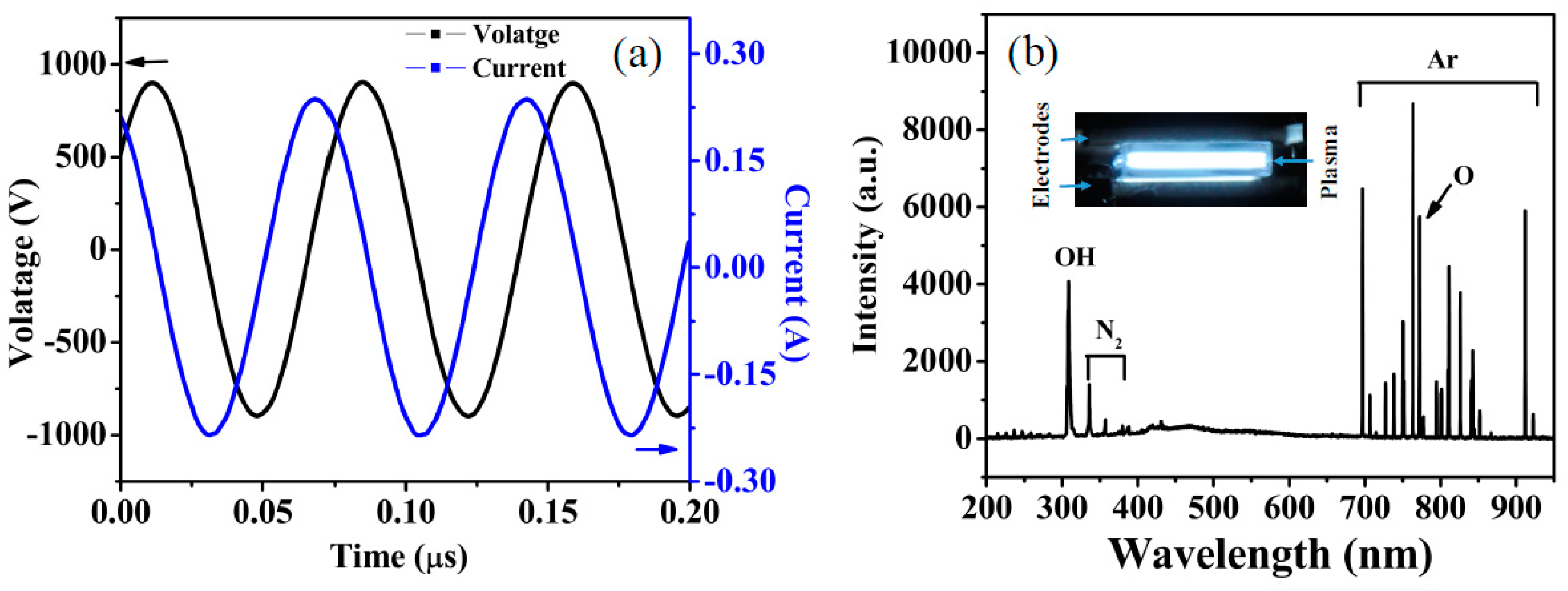
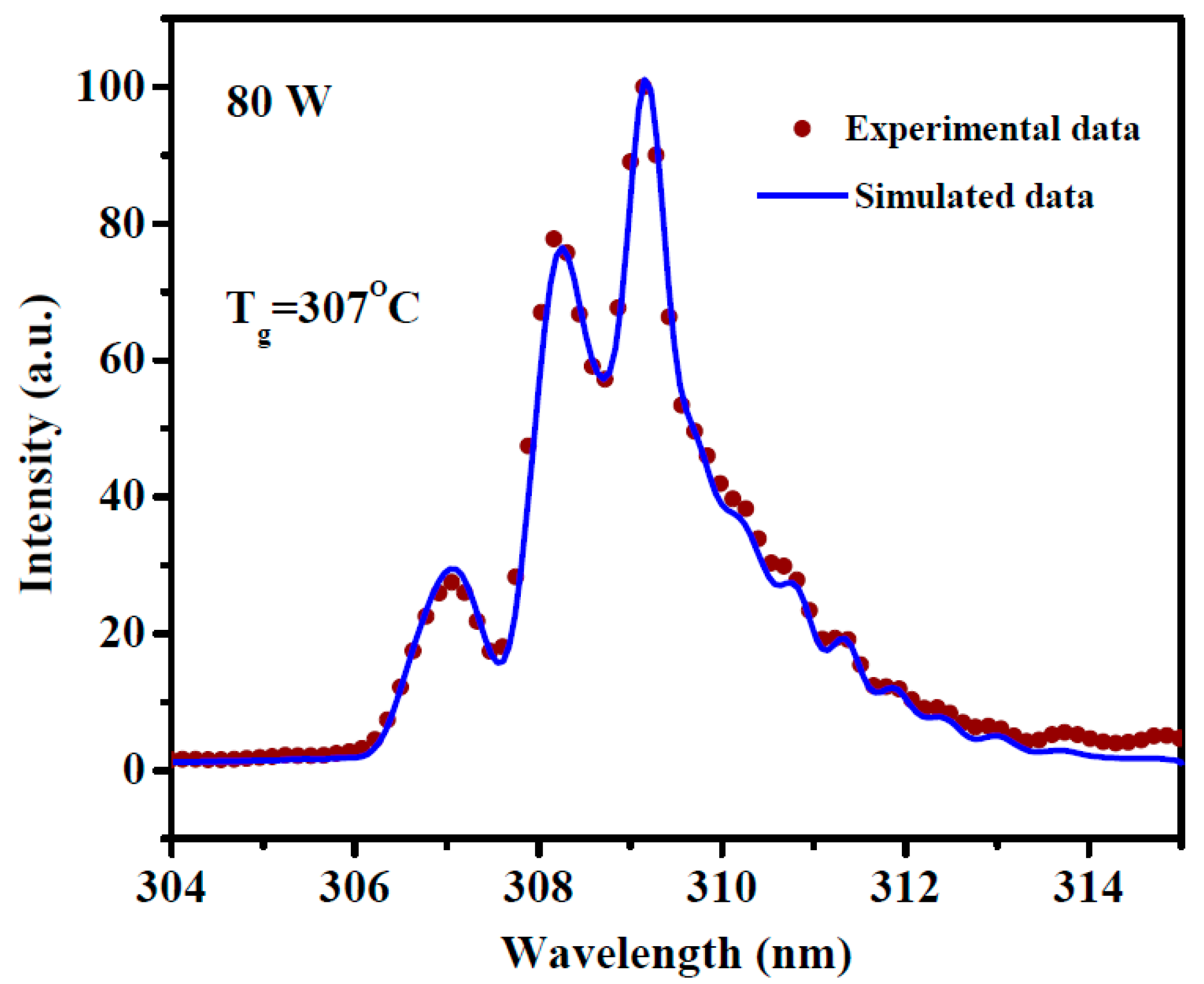
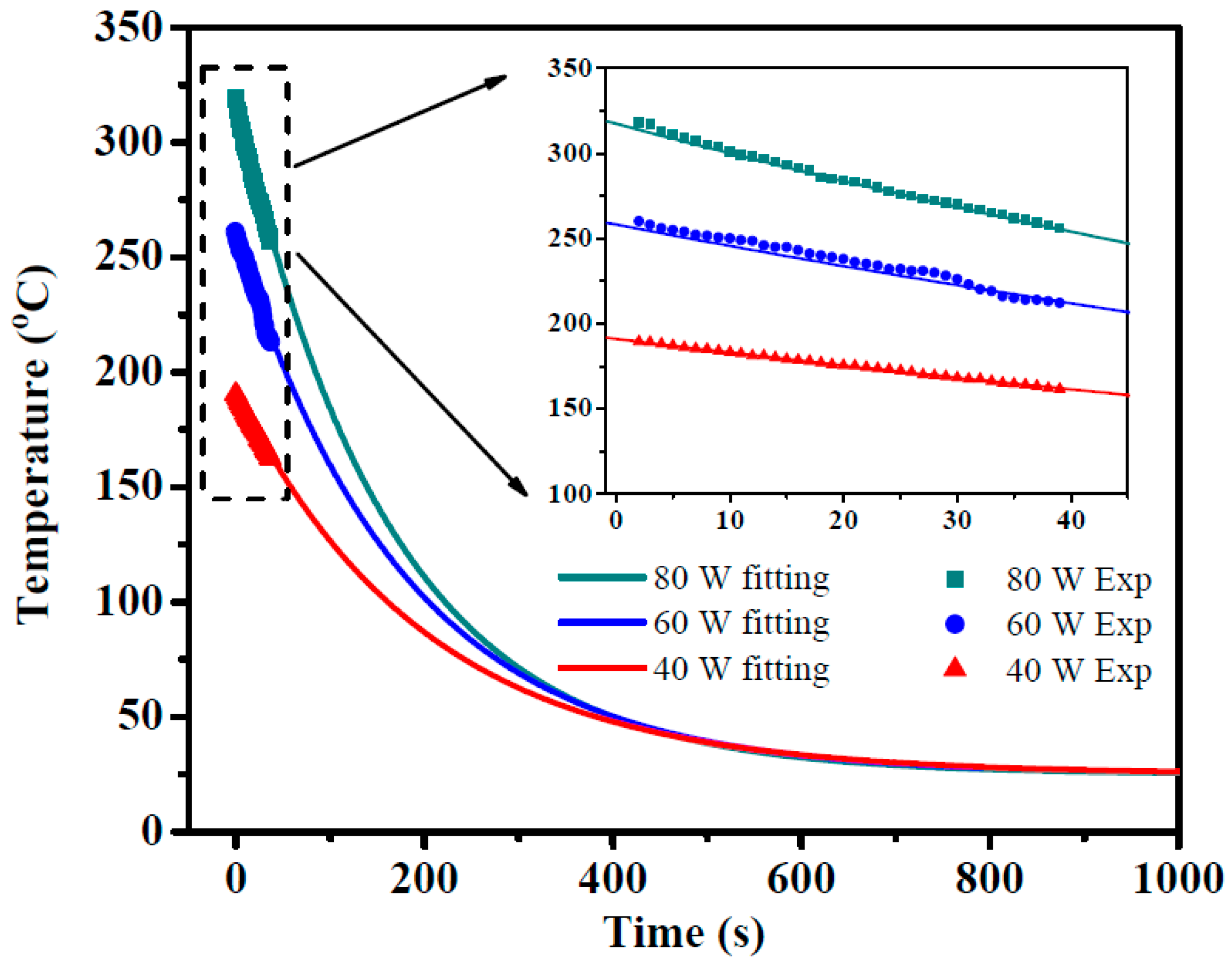

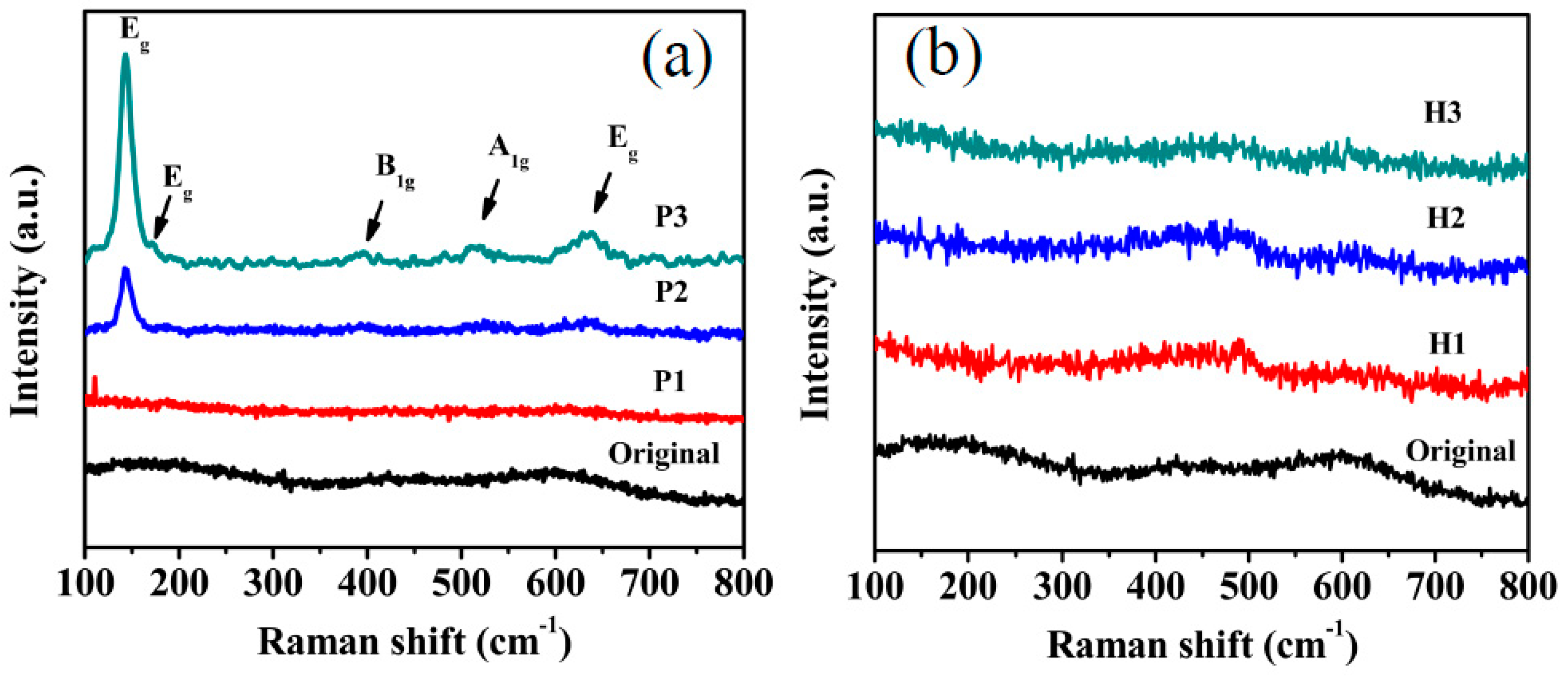
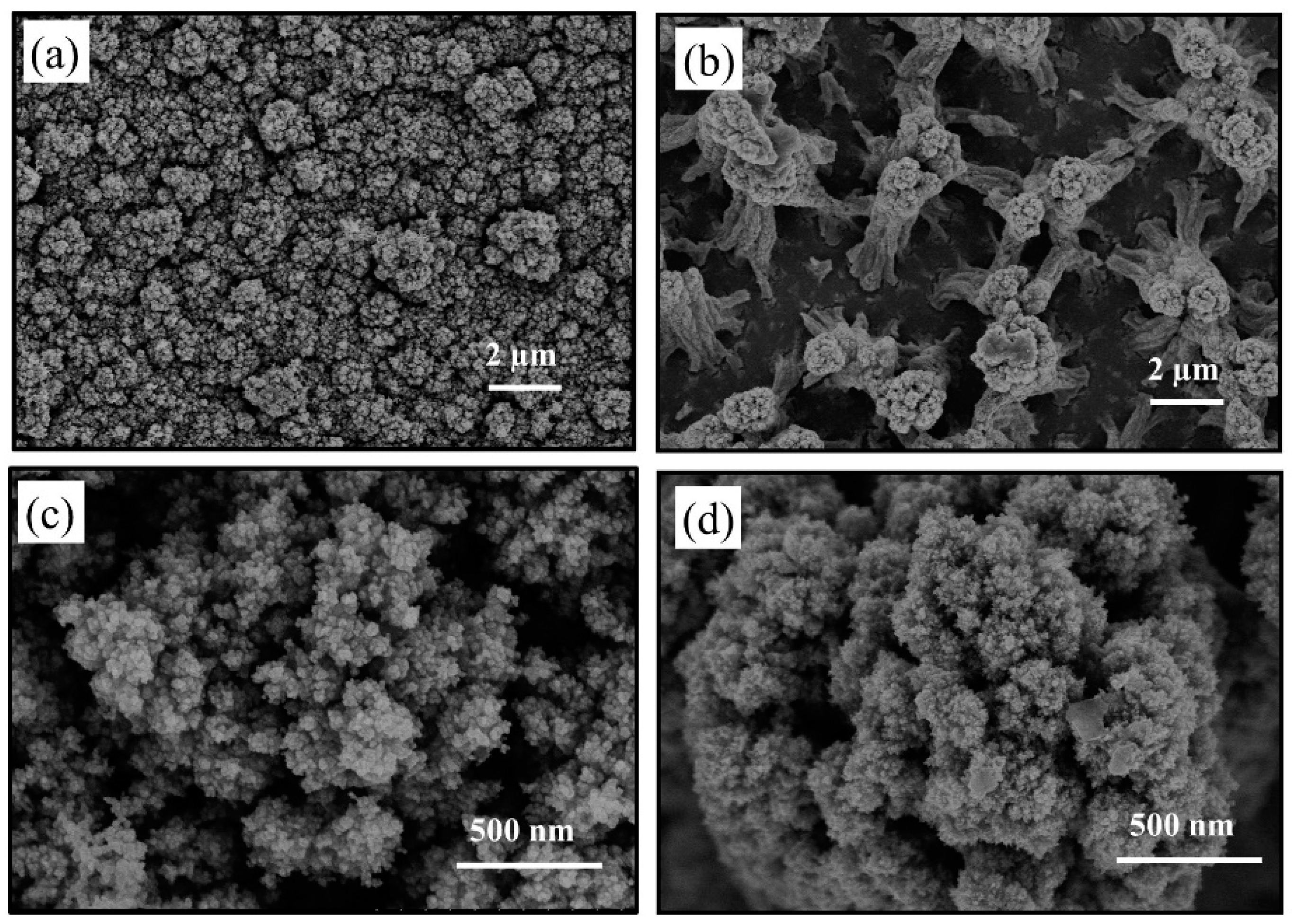
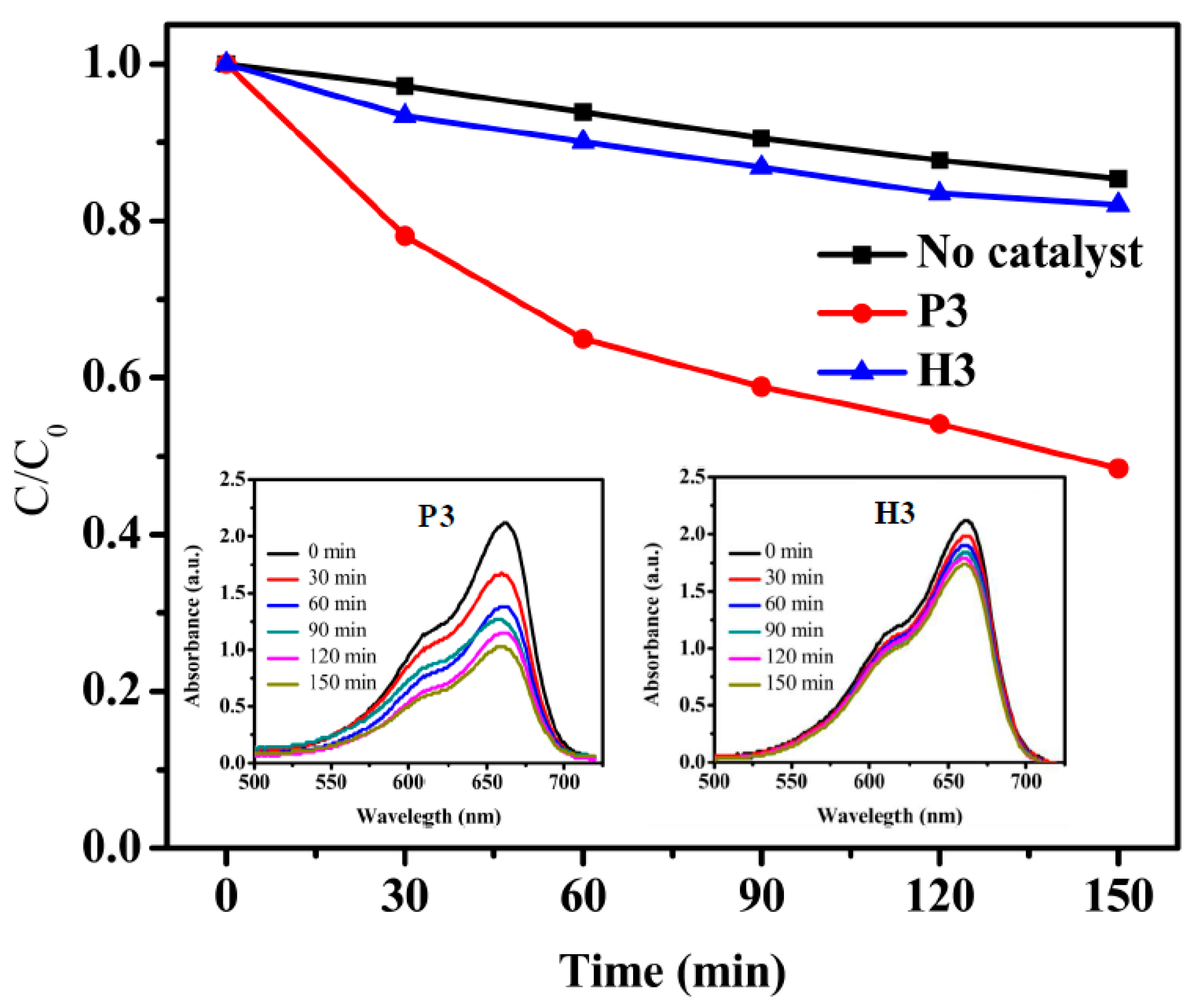
| Power (W) | Vp-p (V) | Cp-p (A) |
|---|---|---|
| 40 | 1560 | 0.34 |
| 60 | 1700 | 0.41 |
| 80 | 1800 | 0.44 |
| Power (W) | 40 | 60 | 80 |
|---|---|---|---|
| Tc (°C) | 196 | 264 | 322 |
| To (°C) | 207 | 277 | 307 |
| Tn (°C) | 192 | 260 | 321 |
| Treatment Method | Plasma Treatment | Heating Treatment | |||||
|---|---|---|---|---|---|---|---|
| Sample Name | Original | P1 | P2 | P3 | H1 | H2 | H3 |
| Treatment condition | As deposited | 40 W | 60 W | 80 W | 196 °C | 264 °C | 322 °C |
© 2019 by the authors. Licensee MDPI, Basel, Switzerland. This article is an open access article distributed under the terms and conditions of the Creative Commons Attribution (CC BY) license (http://creativecommons.org/licenses/by/4.0/).
Share and Cite
Xu, Y.; Zhang, Y.; He, T.; Ding, K.; Huang, X.; Li, H.; Shi, J.; Guo, Y.; Zhang, J. The Effects of Thermal and Atmospheric Pressure Radio Frequency Plasma Annealing in the Crystallization of TiO2 Thin Films. Coatings 2019, 9, 357. https://doi.org/10.3390/coatings9060357
Xu Y, Zhang Y, He T, Ding K, Huang X, Li H, Shi J, Guo Y, Zhang J. The Effects of Thermal and Atmospheric Pressure Radio Frequency Plasma Annealing in the Crystallization of TiO2 Thin Films. Coatings. 2019; 9(6):357. https://doi.org/10.3390/coatings9060357
Chicago/Turabian StyleXu, Yu, Yu Zhang, Tao He, Ke Ding, Xiaojiang Huang, Hui Li, Jianjun Shi, Ying Guo, and Jing Zhang. 2019. "The Effects of Thermal and Atmospheric Pressure Radio Frequency Plasma Annealing in the Crystallization of TiO2 Thin Films" Coatings 9, no. 6: 357. https://doi.org/10.3390/coatings9060357
APA StyleXu, Y., Zhang, Y., He, T., Ding, K., Huang, X., Li, H., Shi, J., Guo, Y., & Zhang, J. (2019). The Effects of Thermal and Atmospheric Pressure Radio Frequency Plasma Annealing in the Crystallization of TiO2 Thin Films. Coatings, 9(6), 357. https://doi.org/10.3390/coatings9060357




